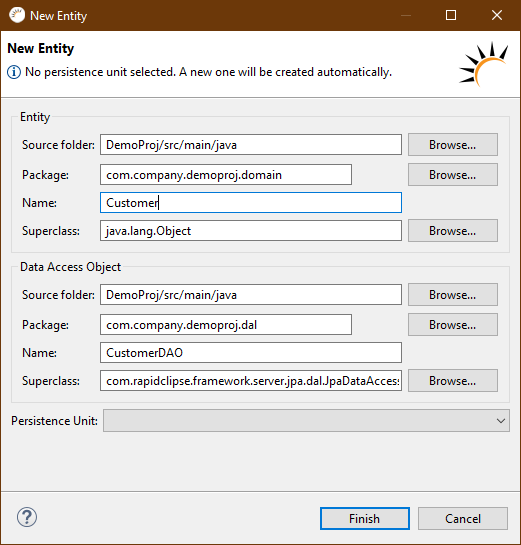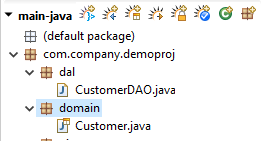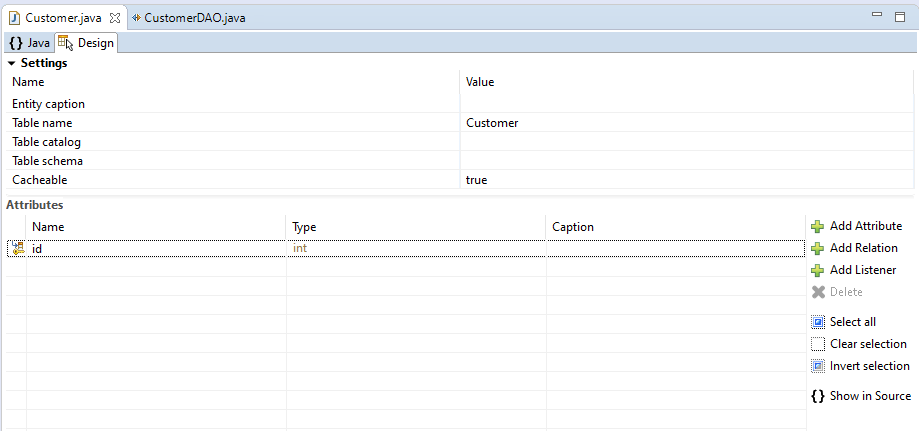Create entity
-
In the menu, select File > New > Entity.
-
At Entity > Name enter the name of the new Entity
-
Click on Finish.

|
Parameters
-
Entity - Settings for the new entity.
-
Data Access Object - Settings for the new DAO (Data Access Obect) for the Entity.
Result
-
Project Management > main-java > domain - The new entity class is generated here.
-
Project Management > main-java > dal - The DAO class for the new entity is generated here.

Example
Generated code for a new Customer entity and CustomerDAO object:
-
Entity
@Entity
@DAO(CustomerDAO.class)
@Cacheable(true)
@Table(name = "Customer")
public class Customer implements Serializable
{
private int id;
public Customer()
{
super();
}
@Id
@GeneratedValue(strategy = GenerationType.AUTO)
@Column(name = "id")
public int getId()
{
return this.id;
}
public void setId(final int id)
{
this.id = id;
}
}
-
DAO
public class CustomerDAO extends JpaDataAccessObject.Default<Customer, Integer>
{
public final static CustomerDAO INSTANCE = new CustomerDAO();
public CustomerDAO()
{
super(Customer.class);
}
}
|
Entities can easily be edited in Entity Editor
private String name;
@Column(name = "`name`")
public String getName()
{
return name;
}
public void setName(String noname)
{
this.name = noname;
}
|
